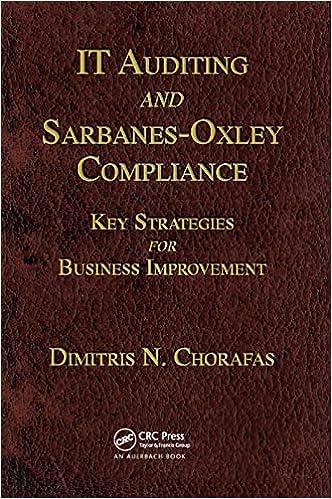



Mr. and Mrs. Lovell file a joint return and have taxable income of $450,000 without considering the following independent fact situations. (Click the icon to view the independent fact situations.) (Click the icon to view the 2020 tax rate schedule for the Married, Filing Joint and Surviving Spouse filing status.) (Click the icon to view the Preferential Rates for Adjusted Net Capital Gain (ANCG) and Qualified Dividends.) Requirement Determine the increase in their tax liability for each independent fact situation. Situation a. Determine the increase in their tax liability when they have a STCG of $27,000 and a LTCL of $19,000. Increase in tax liability $ 2,800 Situation b. They have a LTCG of $20,000 due to the sale of a collectible and a LTCG of $10,000 due to the sale of General Motors stock. Increase in tax liability $ 7,100 Situation c. Same as Part b except they also have a STCL of $5,000. Increase in tax liability $ 5,700 a. They have a STCG of $27,000 and a LTCL of $19,000. b. They have a LTCG of $20,000 due to the sale of a collectible and a LTCG of $10,000 due to the sale of General Motors stock. c. Same as Part b except they also have a STCL of $5,000. Married, Filing Joint and Surviving Spouse If taxable income is: The tax is: Not over $19,750 10% of taxable income. . $1,975.00 + 12% of the excess over $19,750. Over $19,750 but not over $80,250 Over $80,250 but not over $171,050 Over $171,050 but not over $326,600 Over $326,600 but not over $414,700 Over $414,700 but not over $622,050 Over $622,050 .. $9,235.00 + 22% of the excess over $80,250. .. $29,211.00 + 24% of the excess over $171,050. .$66,543.00 + 32% of the excess over $326,600. $94,735.00 + 35% of the excess over $414,700. $167,307.50 + 37% of the excess over $622,050. Capital Gains and Dividends Capital gains and losses are assigned to baskets. Five possible tax rates will apply to most capital gains and losses: Ordinary income tax rates (up to 37% in 2020) for gains on assets held one year or less 28% rate on collectibles gains and includible Sec. 1202 gains Preferential tax rates for gains on assets held for more than one year and qualified dividends based on the taxpayer's taxable income and filing status as shown in the following table: Preferencial Rate Single Filing Jointly* Head of Household 0% Up to $40,000 Up to $80,000 Up to $53,600 15% > $40,000 but not over $441,450 > $80,000 but not over $496,600 > $53,600 but not over $469,050 20% Over $441,450 Over $496,600 Over $469,050 * The corresponding amounts if married filing separately are half of the amounts for filing jointly. The preferential rate is zero for taxable income up to $40,000 if married filing separately. Mr. and Mrs. Lovell file a joint return and have taxable income of $450,000 without considering the following independent fact situations. (Click the icon to view the independent fact situations.) (Click the icon to view the 2020 tax rate schedule for the Married, Filing Joint and Surviving Spouse filing status.) (Click the icon to view the Preferential Rates for Adjusted Net Capital Gain (ANCG) and Qualified Dividends.) Requirement Determine the increase in their tax liability for each independent fact situation. Situation a. Determine the increase in their tax liability when they have a STCG of $27,000 and a LTCL of $19,000. Increase in tax liability $ 2,800 Situation b. They have a LTCG of $20,000 due to the sale of a collectible and a LTCG of $10,000 due to the sale of General Motors stock. Increase in tax liability $ 7,100 Situation c. Same as Part b except they also have a STCL of $5,000. Increase in tax liability $ 5,700 a. They have a STCG of $27,000 and a LTCL of $19,000. b. They have a LTCG of $20,000 due to the sale of a collectible and a LTCG of $10,000 due to the sale of General Motors stock. c. Same as Part b except they also have a STCL of $5,000. Married, Filing Joint and Surviving Spouse If taxable income is: The tax is: Not over $19,750 10% of taxable income. . $1,975.00 + 12% of the excess over $19,750. Over $19,750 but not over $80,250 Over $80,250 but not over $171,050 Over $171,050 but not over $326,600 Over $326,600 but not over $414,700 Over $414,700 but not over $622,050 Over $622,050 .. $9,235.00 + 22% of the excess over $80,250. .. $29,211.00 + 24% of the excess over $171,050. .$66,543.00 + 32% of the excess over $326,600. $94,735.00 + 35% of the excess over $414,700. $167,307.50 + 37% of the excess over $622,050. Capital Gains and Dividends Capital gains and losses are assigned to baskets. Five possible tax rates will apply to most capital gains and losses: Ordinary income tax rates (up to 37% in 2020) for gains on assets held one year or less 28% rate on collectibles gains and includible Sec. 1202 gains Preferential tax rates for gains on assets held for more than one year and qualified dividends based on the taxpayer's taxable income and filing status as shown in the following table: Preferencial Rate Single Filing Jointly* Head of Household 0% Up to $40,000 Up to $80,000 Up to $53,600 15% > $40,000 but not over $441,450 > $80,000 but not over $496,600 > $53,600 but not over $469,050 20% Over $441,450 Over $496,600 Over $469,050 * The corresponding amounts if married filing separately are half of the amounts for filing jointly. The preferential rate is zero for taxable income up to $40,000 if married filing separately










